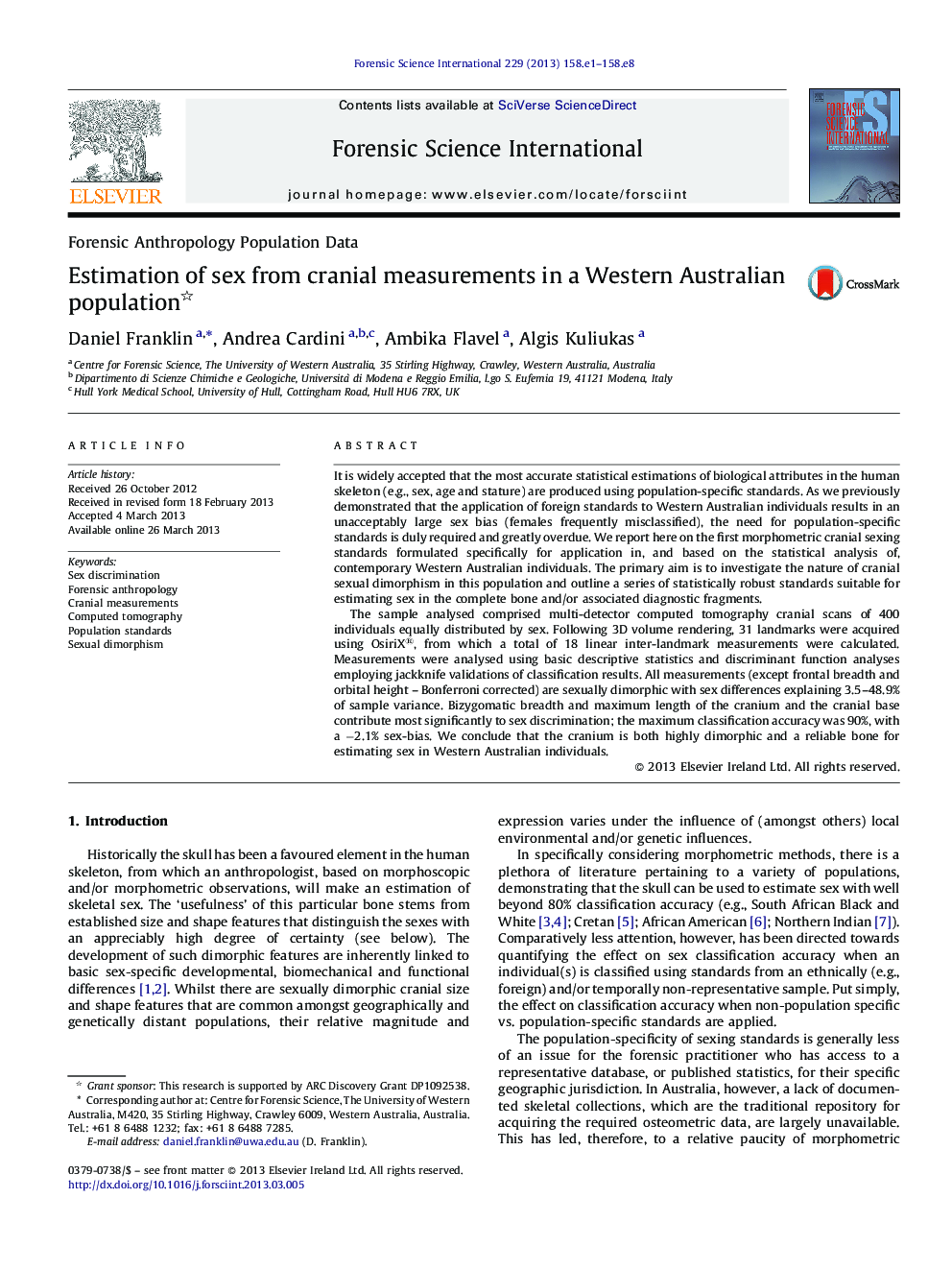| Article ID | Journal | Published Year | Pages | File Type |
|---|---|---|---|---|
| 95966 | Forensic Science International | 2013 | 8 Pages |
Abstract
The sample analysed comprised multi-detector computed tomography cranial scans of 400 individuals equally distributed by sex. Following 3D volume rendering, 31 landmarks were acquired using OsiriX®, from which a total of 18 linear inter-landmark measurements were calculated. Measurements were analysed using basic descriptive statistics and discriminant function analyses employing jackknife validations of classification results. All measurements (except frontal breadth and orbital height - Bonferroni corrected) are sexually dimorphic with sex differences explaining 3.5-48.9% of sample variance. Bizygomatic breadth and maximum length of the cranium and the cranial base contribute most significantly to sex discrimination; the maximum classification accuracy was 90%, with a â2.1% sex-bias. We conclude that the cranium is both highly dimorphic and a reliable bone for estimating sex in Western Australian individuals.
Keywords
Related Topics
Physical Sciences and Engineering
Chemistry
Analytical Chemistry
Authors
Daniel Franklin, Andrea Cardini, Ambika Flavel, Algis Kuliukas,
